
SAP Enterprise Product Development
Accelerate product development and bring it to market faster with innovative services for collaboration, engineering, formulation, and visualization.



Intelligent product design and development within the supply chain
The SAP Enterprise Product Development (SAP EPD) module focuses on product development processes. It helps businesses efficiently handle manufacturing processes and improve them by providing access to business data via a 3D visual index.
SAP EPD offers all the required tools for secure collaboration on product data, including IBOMs, materials, and documents, which increases transparency and risk mitigation by engaging with the right supplier.
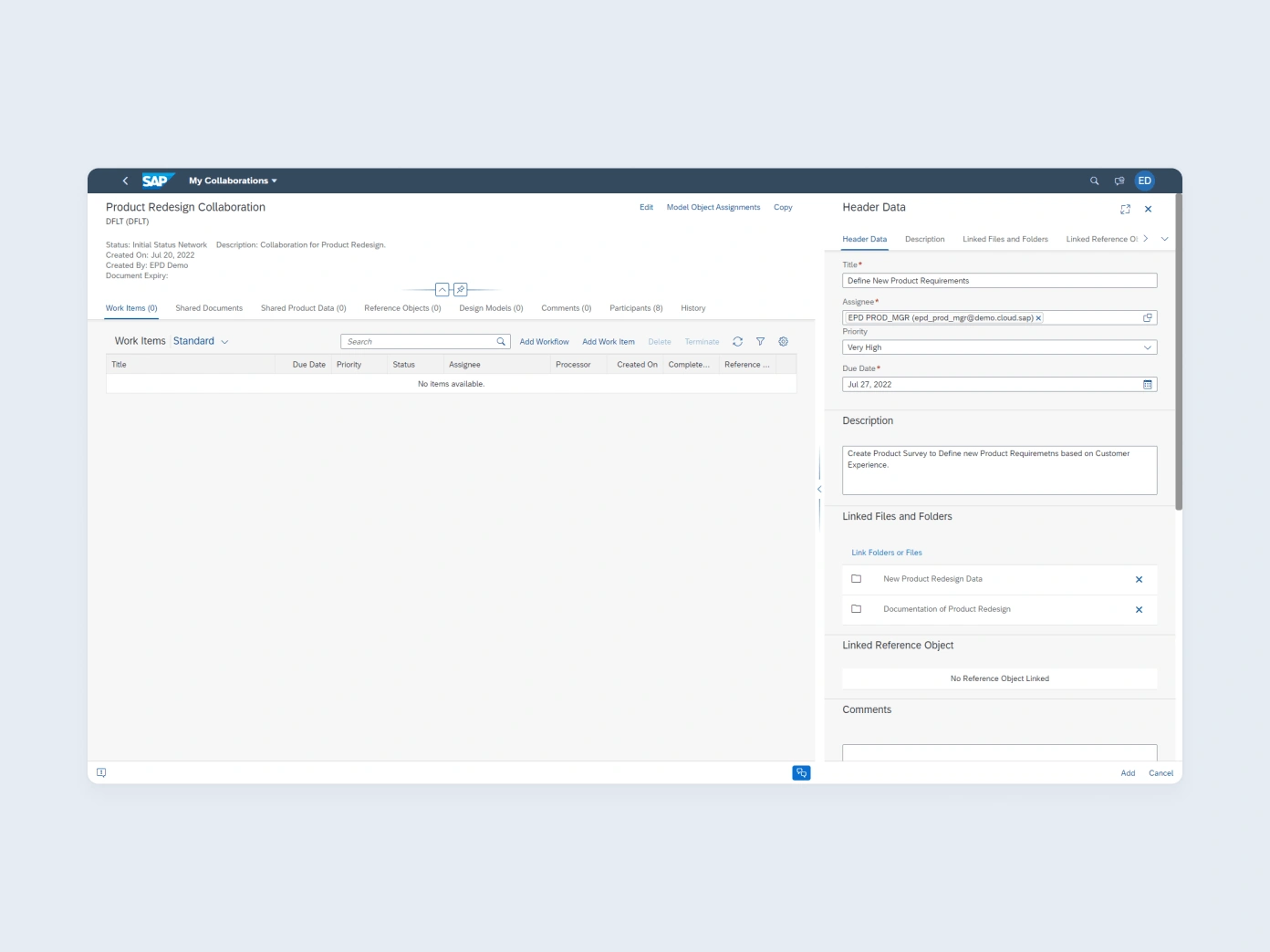
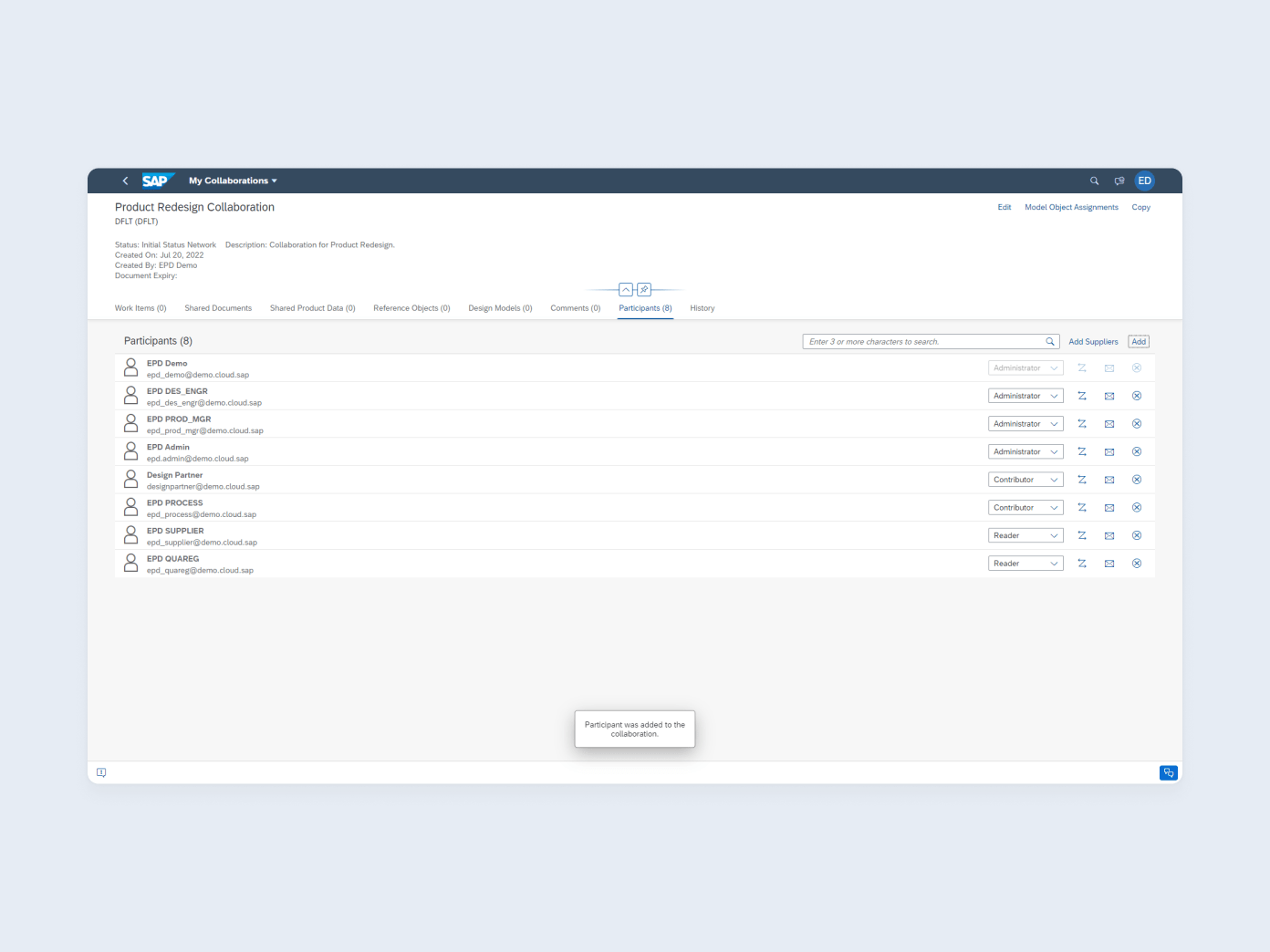
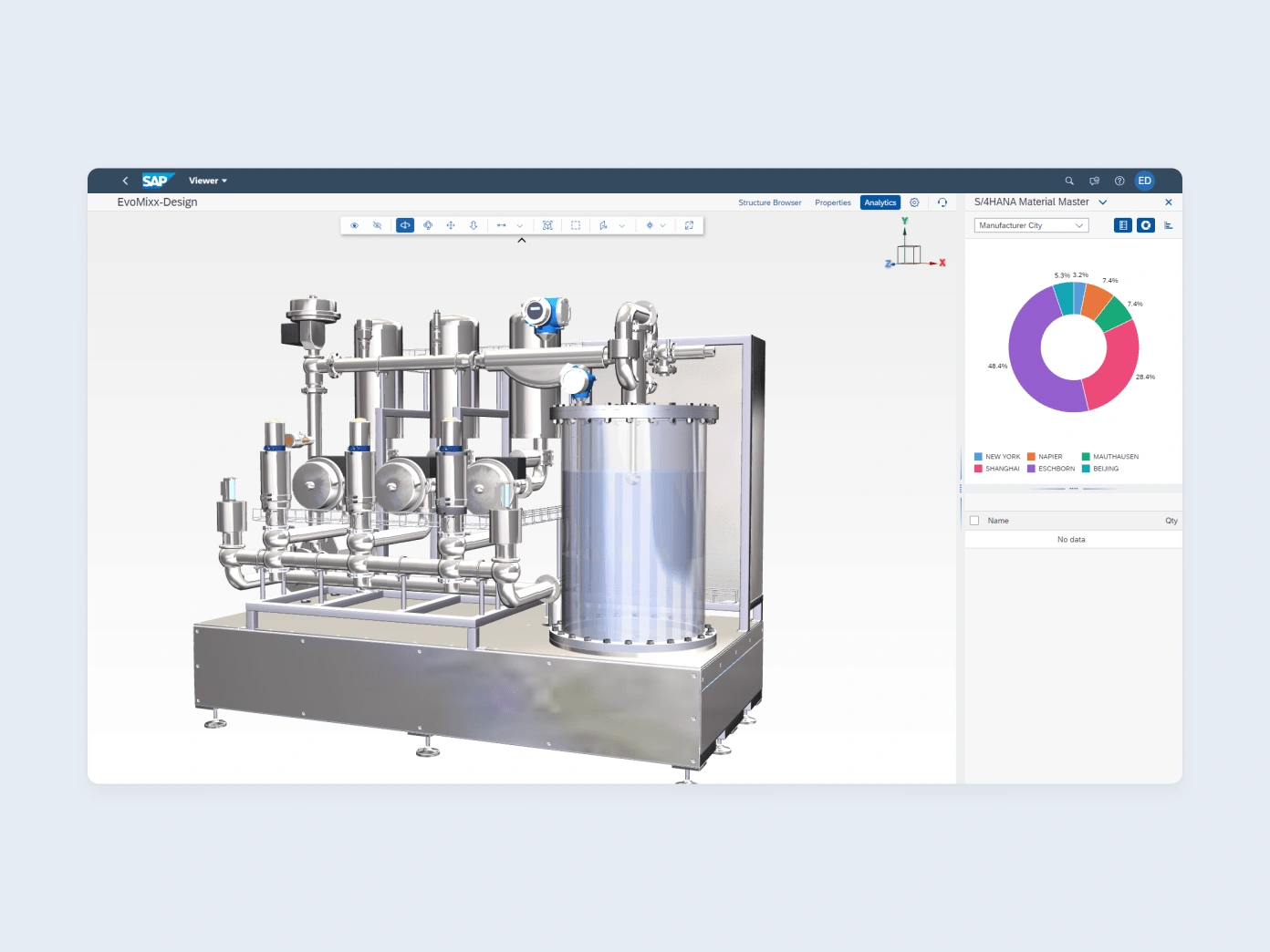
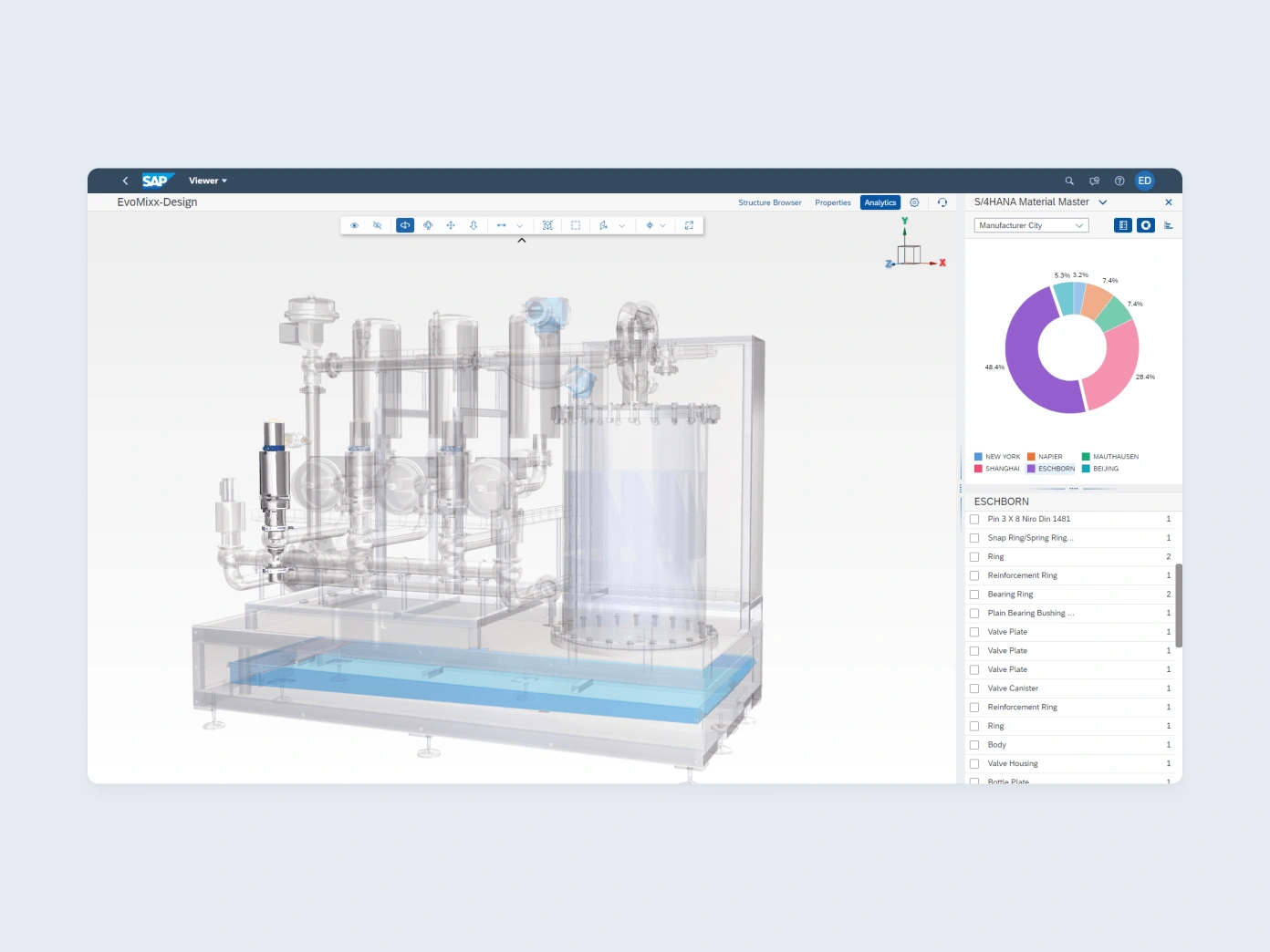
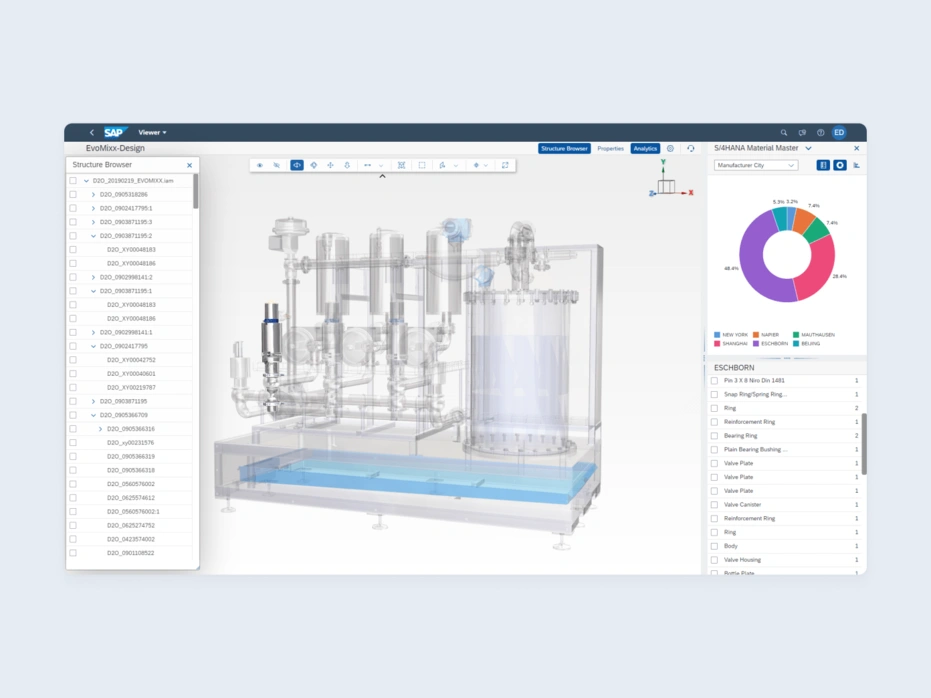

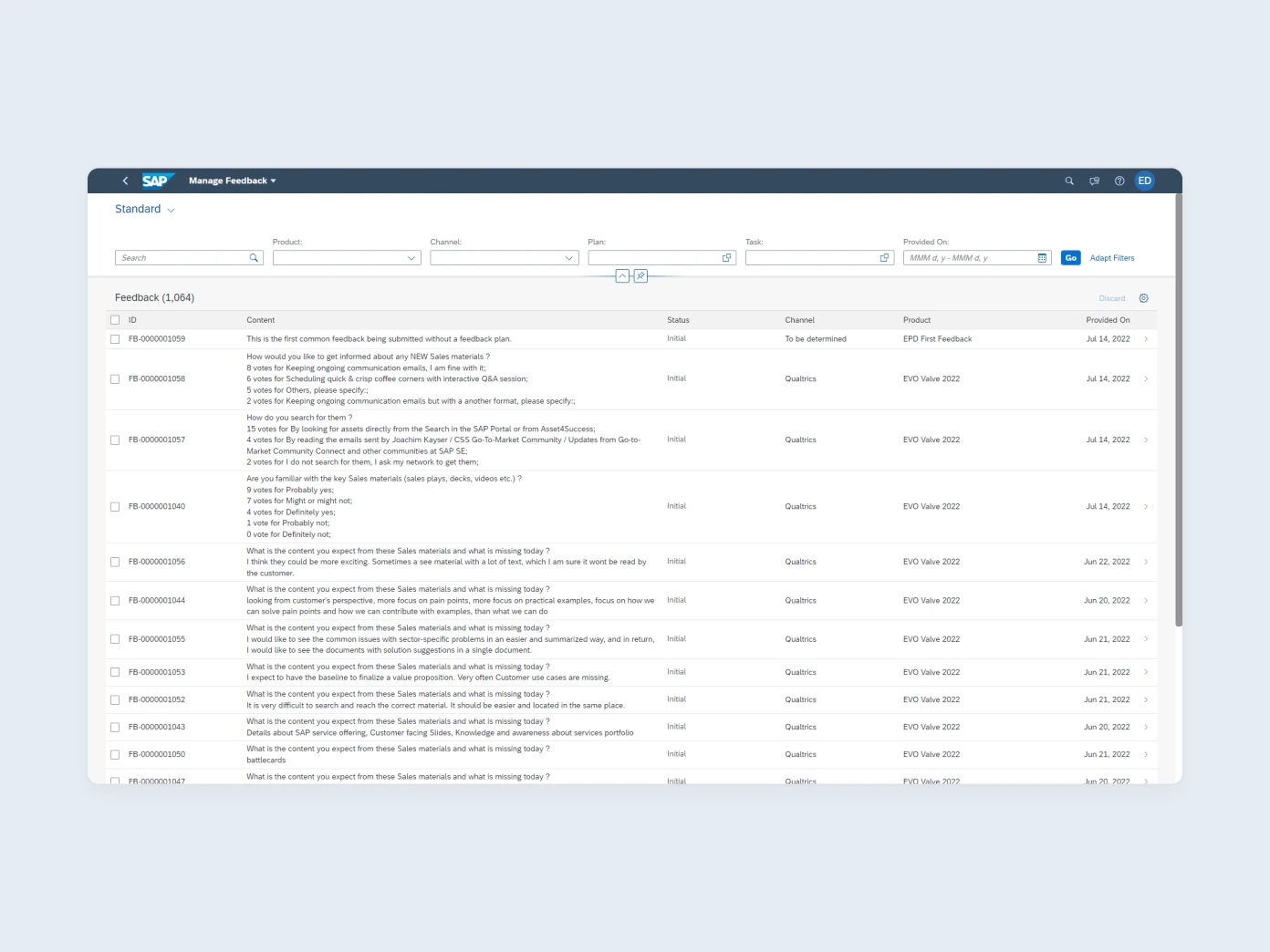
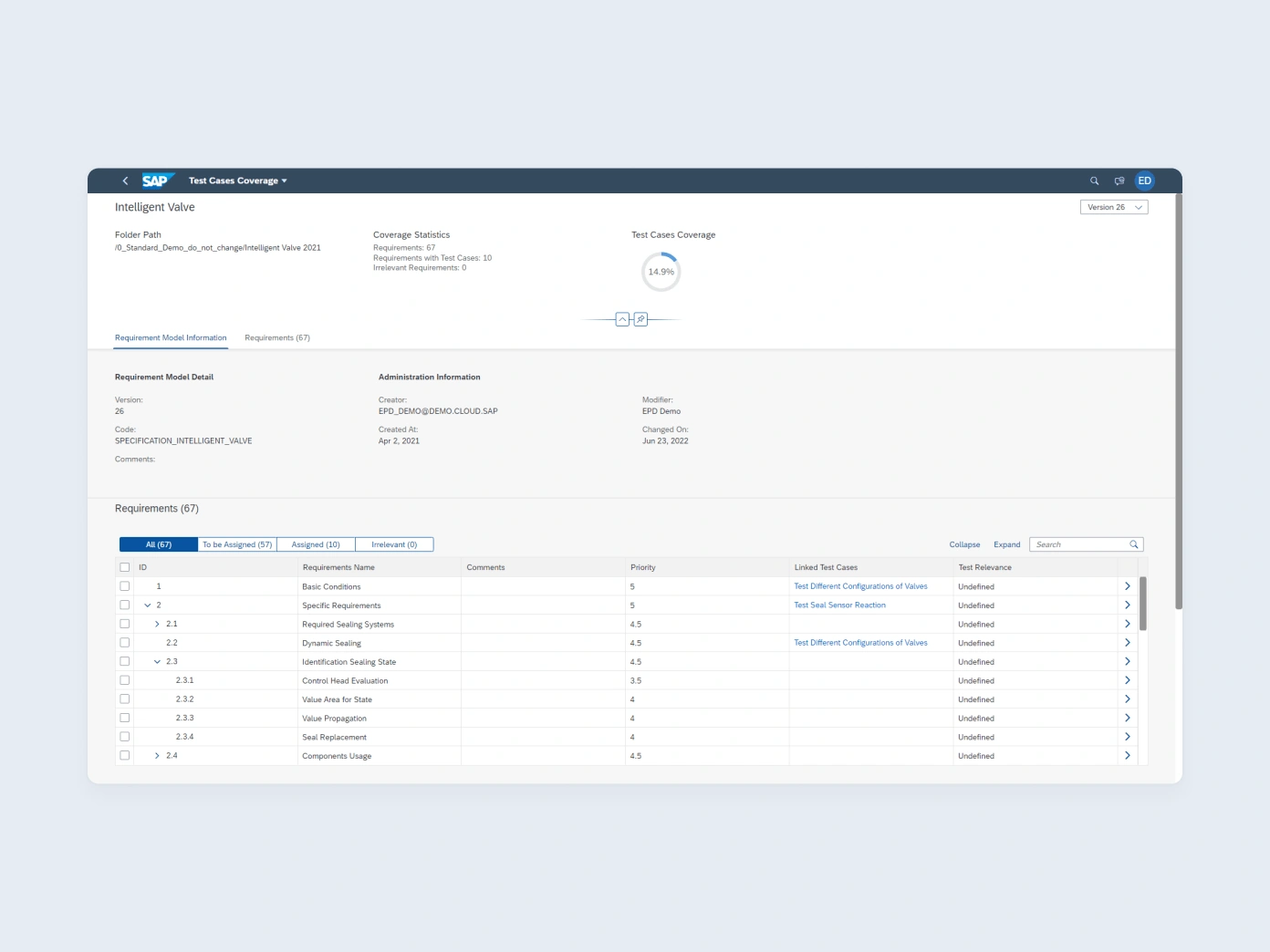
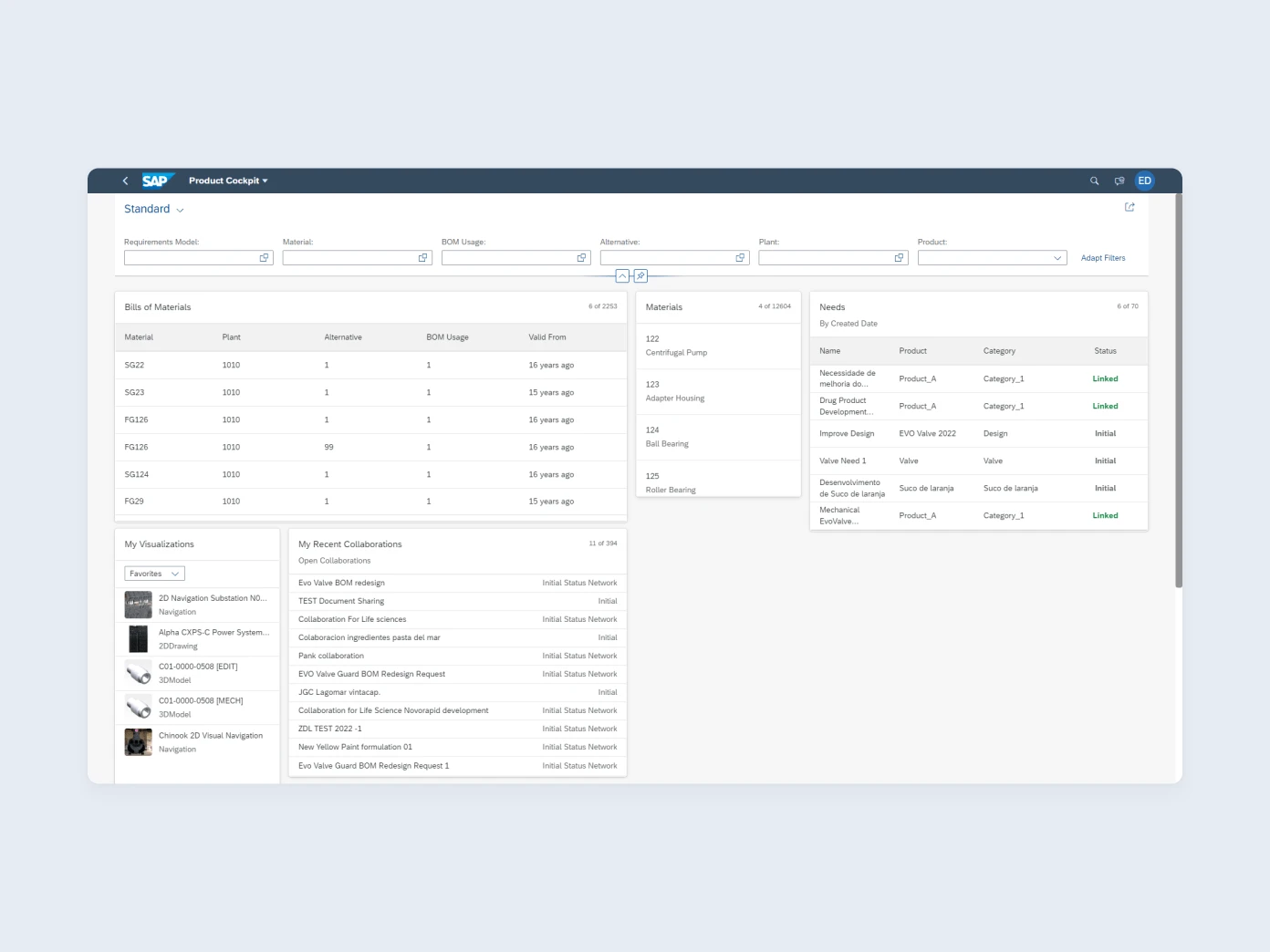
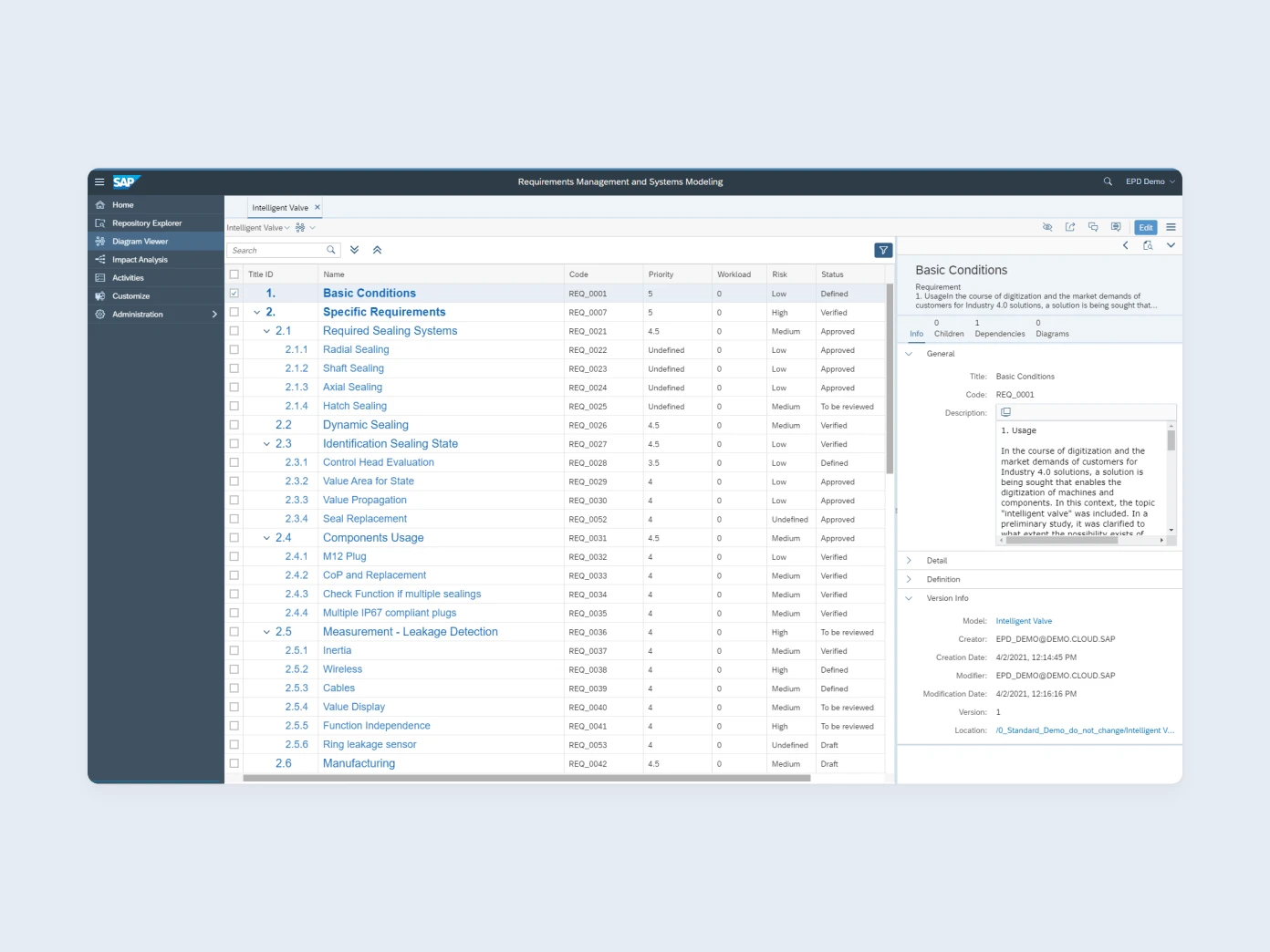
What Modules Does SAP EPD Include?

Collaboration
- Requirements-driven engineering collaboration
- Document sharing
- 3D visual design and redlining
- Collaboration on structured product data
- Supplier collaboration
- Collaboration on changes

Engineering
- Requirements acquisition
- Requirements management
- Functional structure management
- Impact and lineage analysis
- Test planning and execution
- Test artifacts and results management

Visualization
- Simplified UX
- Importing, browsing, and sharing 2D/3D/360 panoramas
- Visual data integration
- Authoring, editing, and enhancing visualizations
- Role-based visual application templates

Connected Products
- Simulation-based digital twin
- Virtual sensors
- What-if simulation
- Dynamic 3D visualization
- Collaboration with OEMs
SAP EPD Key Benefits

Customer-oriented product development
- More product variety
- Requirement acquisition
- Product requirements transformation into multi-disciplinary digital models for further synthesis, simulation, and optimization
- Combination of engineering and business data to build a digital chain for the entire product lifecycle
- Access to real-time information on requirements, workflows, and product data with product cockpit

Accelerated product launch
- Single source of accurate information for collaboration across the enterprise
- Reduced lead time for product parts and constituents
- Reduced iterations on collaborative products
- Reduced time to make key business decisions by providing access and visibility to business data, insights, and actions via a 3D visual index

Transparency
- Workflow-based collaboration
- Documentation structure
- Link requirements to various objects to provide complete traceability
- Facilitated communication among stakeholders

Integration
- SAP S/4HANA
- SAP EPPM, RD, PLM, etc. (optional)
- Qualtrics
- Asset Intelligence Network

Test management
- Test artifacts creation and management
- Test planning and execution against product requirements
- Test result analysis
- Test management components linking to engineering requirements (Test Coverage application and linking)

Product complexity management
- Model-based systems engineering
- Early issue detection and system defect reduction
- System overview from multiple perspectives
- Visual analysis
How We Can Help

Consulting

Implementation

Integration

Support

Security
Integration Capabilities of SAP EPD Across the SAP Ecosystem
As a part of the ecosystem, SAP EPD integrates seamlessly with an existing SAP landscape, allowing you to create a single space for your business operations coordination and establish seamless data exchange. Here’s the list of the most beneficial integrations:
- SAP S/4HANA: Integration with SAP S/4HANA ensures access to material data, specifications, production processes, orders, and quality management. SAP S/4HANA integration helps streamline and coordinate engineering and production data.
- SAP PLM: As a part of next-gen SAP PLM solutions, SAP EPD supports collaborative development processes, requirements management, specifications, and change management.
- SAP Engineering Control Center (ECTR): SAP ECTR enables the transfer of CAD data into SAP and its utilization in the development process and engineering document management. It also simplifies data exchange between engineering systems and SAP EPD.
- SAP Document Management System (DMS): SAP EPD utilizes SAP DMS for handling documentation within collaborative projects, providing centralized storage and management of technical documentation and specifications.
- SAP Enterprise Product Engineering (EPE): Utilize SAP EPE to expand capabilities for collaborative development and management of product structures (BOM) and digital twins.
- SAP Intelligent Product Design: Integration with SAP Intelligent Product Design enables collaborative product development in the cloud with support for commenting and real-time co-editing.
SAP EPD Integration Scenarios
Dev team synchronization
Streamlined data usage
Change tracking
Industries We Serve
Sustainability and Innovation in SAP EPD
SAP EPD adheres to global standards in ecology and sustainable development, so businesses can rely on EPD in early-stage product innovation and sustainability engineering. This solution helps:
- Consider environmental constraints in the early development phase.
- Monitor sustainability with the help of integrated and consolidated data related to raw materials, components, waste, and recycling.
- Utilize LCA (Life Cycle Assessment) approaches in product development.
Customers' success stories

LeverX Helped A Construction Machinery Corporation Increase Efficiency by 25-35%
The LeverX team helped the customer streamline document management and product lifecycle management. We also helped the client to create a single source of truth which makes it easier to collaborate with other facilities.

BMAX & IPS INTEGRATION FOR JBS
Our team successfully integrated IPS & BMAX to transform master data creation for a food processing company.

Migration to SAP for a Medical Device Manufacturer
LeverX assisted a medical device manufacturer in migration to SAP and workflow automation.
Why Choose LeverX as Your SAP Implementation Provider?
Proven track record
Industry experts
SAP partnership
Quality and security track record
Investment in innovation
Flexibility
Implementation Roadmap
- Current Processes Evaluation: Assess existing business processes and identify the organization's needs.
- Defining Technical Requirements: Create a detailed specification of the functional and technical needs of the new system.
Discover
- Setting Goals and Objectives: Establish and agree on the goals to be achieved throughout the project.
- Assembling the Project Team: Appoint team members and define their roles and responsibilities.
- Project Plan Development: Create a comprehensive plan that outlines project phases, timelines, resources, and key performance indicators.
- Budget Determination: Estimate and approve the budget.
- Specifications Preparation: Develop the technical and functional specifications for the development team.
Prepare
- Ensuring Business Requirements are Met: Check that SAP EPD aligns with business requirements and project objectives.
- Data Validation: Verify the accuracy and compliance of the data.
Explore
- Data Migration: Transfer data from existing systems to the new one.
- System Configuration: Set up the solution according to requirements and specifications.
- Customization: Develop additional features and modules, if the standard solution does not meet all needs.
- Integrations: Configure SAP EPD to work with other IT systems and applications.
Realize
- Testing: Perform functional, integration, regression, and load testing to ensure that all works correctly.
- User Training: Organize sessions to help users become familiar with the new system.
Deploy
- System Readiness Check: Verify that the system is ready for operational use.
- Launch: Officially transition to active use of SAP EPD.
- Ongoing Support: Continuously monitor solution performance to identify and resolve any issues.
Run
FAQ
What is SAP EPD?
What is the difference between SAP EPD and SAP Enterprise Product Engineering (EPE)?
How does SAP EPD help create a "digital thread"?
SAP EPD creates a "digital thread" by linking all product-related information from concept to completion. For example, it allows you to connect a customer requirement to a functional specification, link that specification to a 3D CAD model, associate that model with test plans and simulation results, and finally tie it all to the manufacturing BOM in SAP S/4HANA. This creates end-to-end traceability, so the impact of a change to any single item can be instantly analyzed across the entire product lifecycle.
What are the key prerequisites for a successful SAP EPD implementation?
Is SAP EPD only for engineers?
How does the "Sustainability and Innovation" feature work in practice?
This feature allows you to embed sustainability metrics directly into the early design phase. For example, an engineer designing a new component in EPD can access live data from other SAP systems, such as SAP Product Footprint Management. This allows them to compare the carbon footprint or recyclability of different raw materials before finalizing the design, making sustainability a key decision criterion alongside cost and performance.
Contact Us
What happens next?
-
1
An expert will reach out to you to discuss your specific needs and requirements.
-
2
We'll sign an NDA to ensure any sensitive information is kept secure and confidential.
-
3
We'll work with you to prepare a customized proposal based on the project's scope, timeline, and budget.
years of expertise
projects
professionals
Contact Us
CONTACT US
If you are looking for an SAP Global Strategic Supplier or Technology Partner for your business, fill out the form below, and we will contact you at short notice.